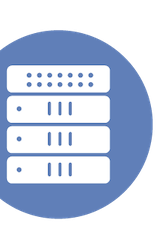|
|
This video is part of the appearance, “cPacket Presents at Security Field Day 13“. It was recorded as part of Security Field Day 13 at 9:00-10:30 on May 29, 2025.
Watch on YouTube
Watch on Vimeo
cPacket uses AI-driven network observability to detect unknown and emerging threats across hybrid cloud and enterprise environments. By applying machine learning and unsupervised anomaly detection to trillions of packets and billions of sessions, it identifies behavioral deviations, flags exfiltration and lateral movement, and delivers deep, real-time insights for proactive, scalable cybersecurity and incident response. The challenge of identifying what constitutes “normal” versus “abnormal” behavior in complex networks is central to cPacket’s AI-driven approach. Instead of relying on static, unmanageable thresholds, their platform uses machine learning to establish a baseline of normal behavior by location, application, and time of day/week, considering all collected metrics (e.g., duration, data volume, latency, connection failures). This allows cPacket to identify subtle anomalies, such as unusually long session durations for specific services or traffic between groups that shouldn’t be communicating, which are indicative of unknown threats like slow-drift exfiltration or lateral movement.
cPacket’s AI capabilities are showcased through examples like detecting exfiltration and lateral movement. For exfiltration, the system can identify both burst and slow-drift data transfers by monitoring session lengths and data volumes, flagging attempts to steal sensitive information. For lateral movement, it detects traffic between unusual or unauthorized network segments. These advanced detections are typically performed on data collected by the packet capture devices (C-Store), where billions of sessions are analyzed. The metrics from these sessions are fed into an S3 bucket, allowing cPacket’s AI model to continuously establish baselines and detect deviations, which are then aggregated into “insights.” These insights provide concise descriptions of anomalous behavior, including when, where, and potentially why they occurred, helping security teams quickly understand and triage potential threats.
The cPacket platform provides a live, real-time view of network activity, with the AI engine continuously generating “insight cards” that group related incidents, such as scanning activity. These cards provide detailed information, including source IP addresses, countries of origin, and communication attempts, which can be further investigated by drilling down to the packet level. While cPacket does not decrypt encrypted traffic, it can still detect numerous indicators of compromise that occur in the clear. Their system is designed for network observability, and its security benefits, such as detecting unusual scanning patterns or unexpected external connections, emerged as a valuable, albeit initially unintended, outcome. This comprehensive approach, including the ability to pull full packet captures for deep forensic analysis, significantly enhances proactive cybersecurity and incident response capabilities.
Personnel: Andy Barnes, Ron Nevo









